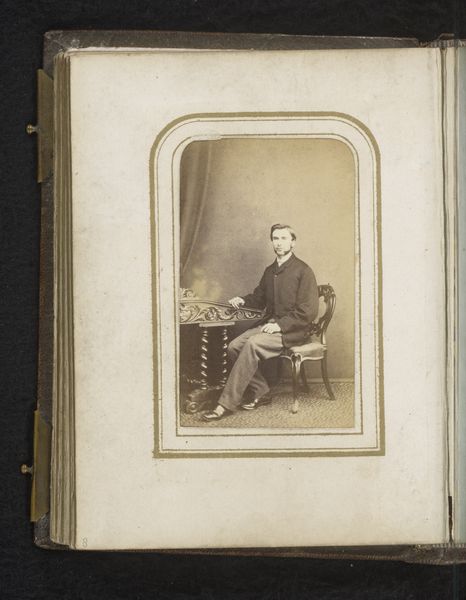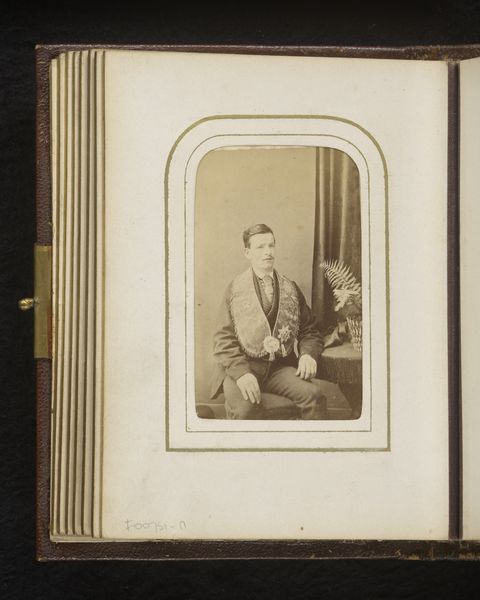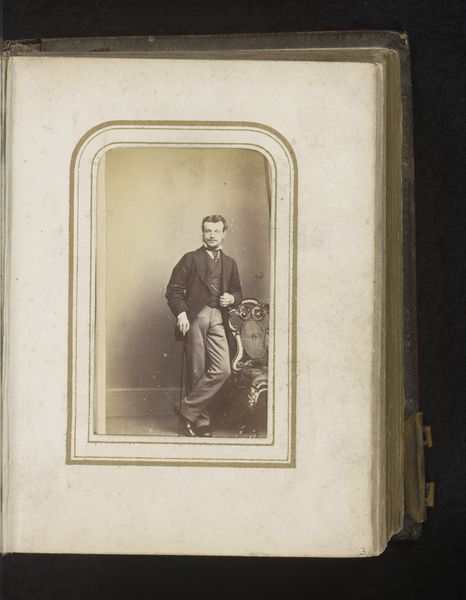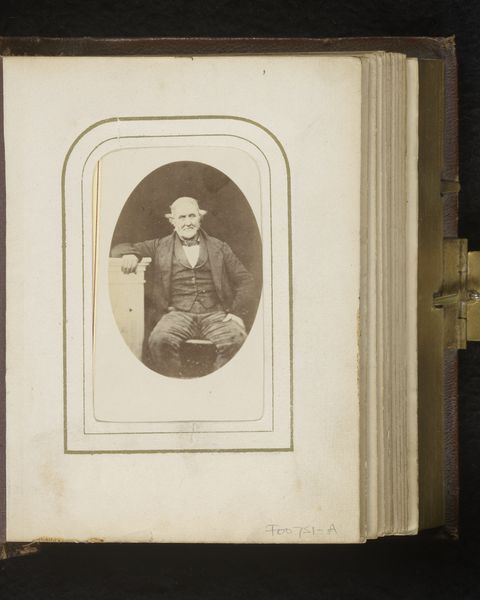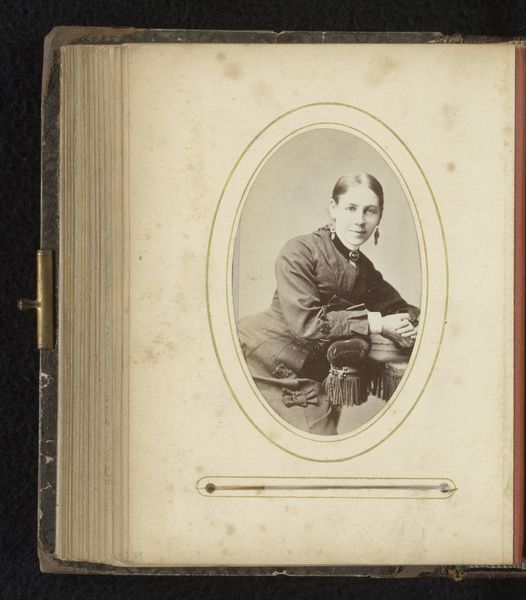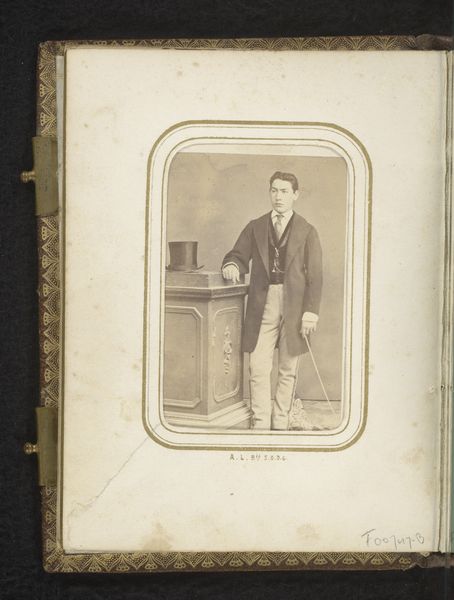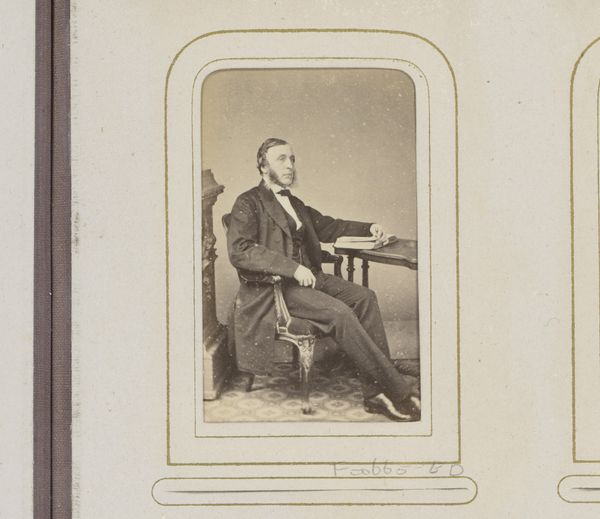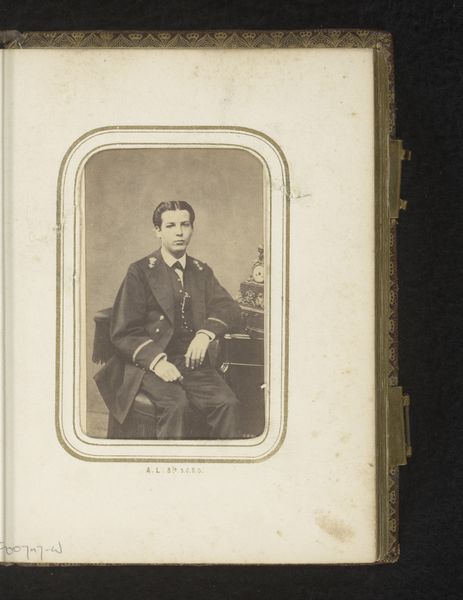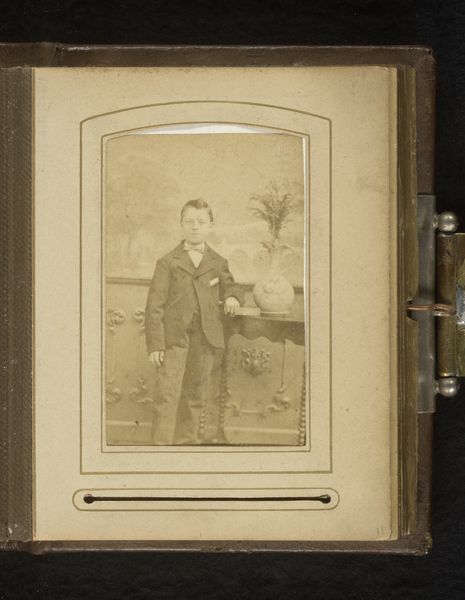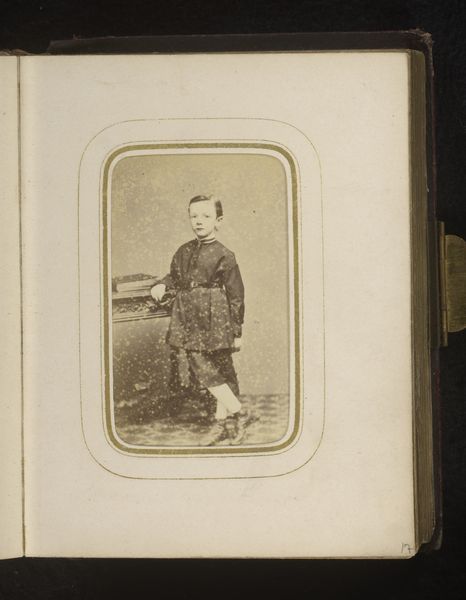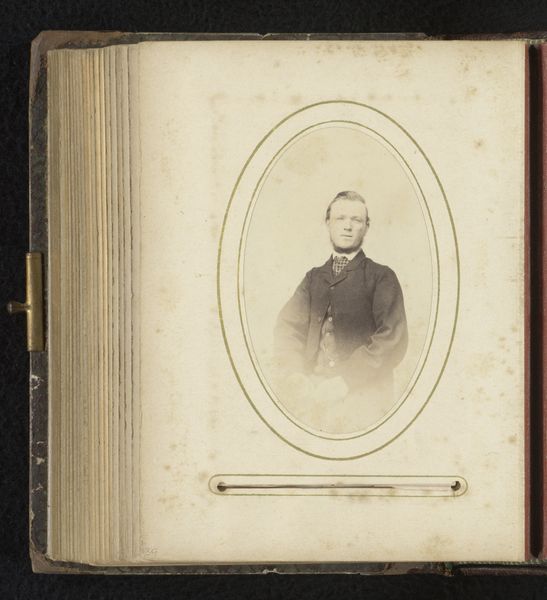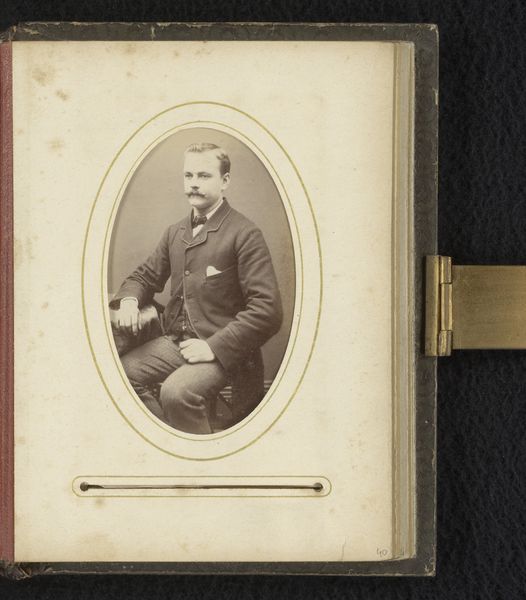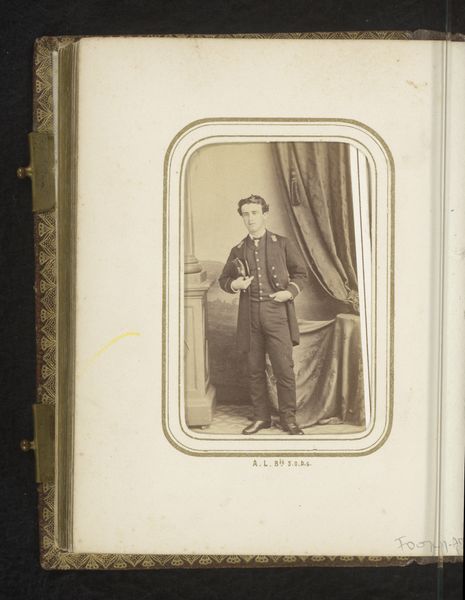
photography
#
portrait
#
sculpture
#
photography
#
genre-painting
#
watercolor
Dimensions: height 102 mm, width 63 mm
Copyright: Rijks Museum: Open Domain
Curator: Ah, yes. This is an interesting portrait. It’s entitled "Portret van een zittende jonge man bij een tafel," which translates to "Portrait of a seated young man by a table.” Dating sometime between 1860 and 1900, it presents, perhaps, a merchant or a civil servant, quite formally posed. Editor: The sepia tones just throw me back to family albums. My first thought is about what a somber little dandy! All buttoned up, trying so hard to look serious... You just want to tousle his hair. It’s like looking at a ghost of somebody’s great-great-uncle trying to break through the barriers of time. Curator: Well, the somberness certainly reflects the photographic conventions of the era. Portraiture was a significant means of projecting status, especially for the emerging middle class. A photograph like this signified respectability and aspiration. The inclusion of the table also adds to that air of considered gentility. It implies access to a space of writing or study, associating the sitter with intellect. Editor: Maybe... Or maybe it was just the flashiest piece of furniture in the studio that day. Still, I can't help but imagine him fidgeting during the long exposure time, desperate to get back to something a little more fun than sitting perfectly still. I wonder what kind of stories that chain on his waistcoat could tell. Is it for his glasses or pocket watch, I wonder? Curator: It's almost certainly for a pocket watch; it was the height of fashion. And in an era where accurate timekeeping was vital for the expanding industrial and mercantile systems, owning a pocket watch meant you had enough wealth not to have to toil every single minute of the day. That little detail speaks volumes about the transformation of nineteenth-century society! This image itself circulated within specific circles—we found it bound into a personal album. Editor: Bound up? He must have been important to the book’s owner, then, rather than someone picked at random! Seeing him framed there as he is, forever captured at that age… It kind of adds a lovely, poignant quality. It transforms the image from something purely for "status" to something so very, very personal. Curator: Indeed, his formal pose speaks less about status than personal relationship. It reminds us of how family photo albums mediated class, time and intimate personal memories within specific kinship groups. Editor: Exactly! Suddenly I don’t want to tousle his hair at all... It all hits harder when you feel like you know the unacknowledged story. He really comes to life.
Comments
No comments
Be the first to comment and join the conversation on the ultimate creative platform.
